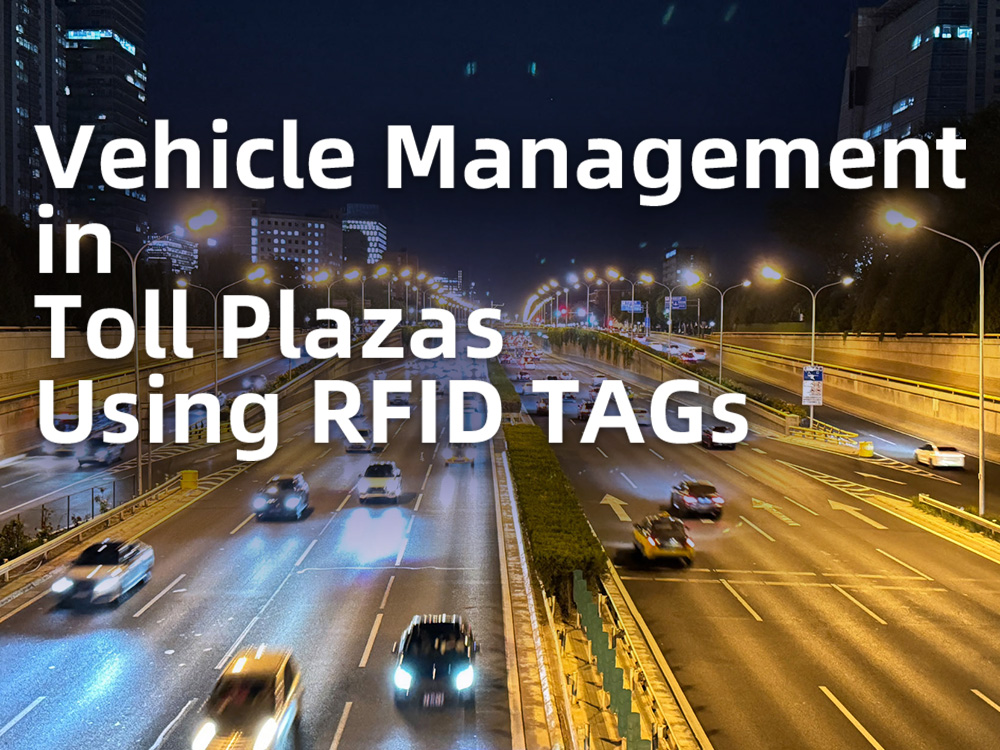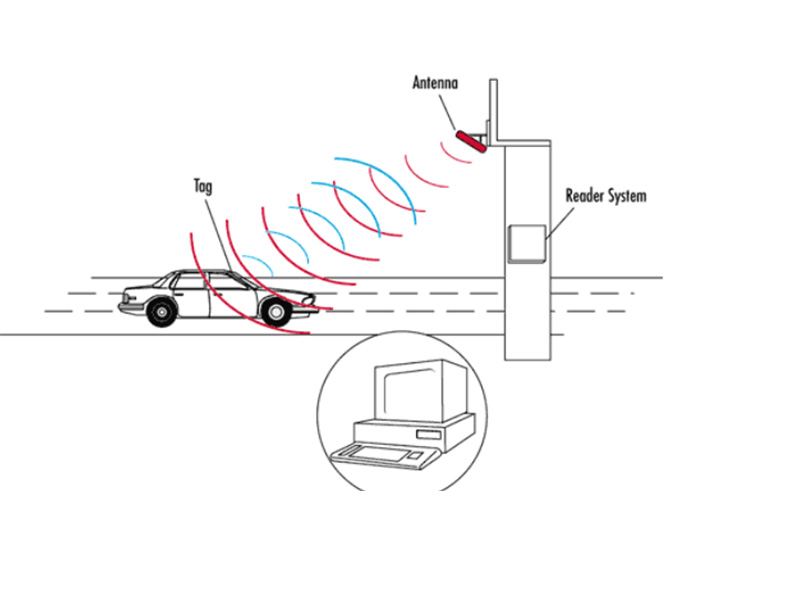Your location: Home Page > RFID Blog | SILION TECH > Vehicle Management in Toll Plazas Using RFID TAGs
News and Information
Vehicle Management in Toll Plazas Using RFID TAGs
Author:2024-10-06 01:10:44
Efficient management of vehicles at toll plazas is a critical part of modern transportation infrastructure. With the rise in vehicular traffic, traditional methods of toll collection have struggled to keep pace, often leading to long queues, traffic congestion, and inefficiencies. To address these issues, Toll Tags have become the standard solution in many countries around the world. These tags, which rely on RFID (Radio Frequency Identification) technology, enable automated, contactless toll collection and streamline the entire process for both toll operators and drivers.
In this blog, we will explore how toll tag systems work, their benefits, and how they are revolutionizing vehicle management at toll plazas.

How Toll Tag Systems Work
Toll tag systems are designed to automatically identify and process toll payments from vehicles passing through a toll plaza without requiring the driver to stop. Here's a step-by-step breakdown of how they function:
1. Issuance of the Toll Tag
Drivers who frequently travel on toll roads are encouraged or required to obtain a toll tag (such as M-TAG, FASTag, or other region-specific tags). These tags are embedded with an RFID chip that contains unique identification information and is linked to the driver's account. The tag is usually affixed to the vehicle's windshield.
When a driver applies for a toll tag, they provide personal details and pre-load the tag account with funds that will be deducted as toll payments each time they pass through a toll plaza.
2. Approaching the Toll Plaza
As the vehicle with the toll tag approaches the toll plaza, RFID readers installed at the toll gate begin transmitting radio signals. These signals activate the RFID chip in the vehicle's toll tag. This is the first step in the toll collection process and happens automatically, without any action needed from the driver.
The RFID readers can detect the tag from a reasonable distance, ensuring that vehicles do not have to stop to pay. This helps maintain the flow of traffic, preventing congestion at the toll gate.
3. Data Transmission and Identification
Once the RFID reader identifies the toll tag, the information stored on the tag (such as the unique vehicle ID, tag account number, and account balance) is transmitted to the toll plaza's backend system.
The backend system verifies the vehicle’s identity and checks the status of the linked account, ensuring that the driver has sufficient funds to cover the toll fee. This process is almost instantaneous, allowing vehicles to pass through the toll gate without stopping.
4. Toll Deduction and Payment Confirmation
After the backend system verifies the tag and account balance, the appropriate toll amount is automatically deducted from the driver's pre-loaded account. The system then logs the transaction, including details such as the time of passage, the toll amount deducted, and the vehicle’s identification number.
If the driver’s account has sufficient funds, the toll gate automatically opens, allowing the vehicle to pass through seamlessly. If the account has insufficient funds, the system will notify the driver, either by directing them to a manual payment lane or sending a payment reminder for account replenishment.
5. Exit and Data Logging
Once the vehicle exits the toll plaza, all transaction data is stored in the system for future reference. This data can be used for a variety of purposes, including toll auditing, revenue tracking, and even traffic management analytic.
The entire process—from the vehicle approaching the toll plaza to passing through the gate—takes only a few seconds, drastically improving the speed and efficiency of toll collection.

Key Benefits of Using Toll Tags for Vehicle Management
The use of toll tags at toll plazas provides significant benefits for both drivers and toll operators. These benefits include:
1. Reduced Traffic Congestion
One of the most significant advantages of toll tag systems is their ability to reduce traffic congestion. Since vehicles equipped with toll tags can pass through the toll gate without stopping, traffic flow remains uninterrupted, even during peak travel times. This reduces bottlenecks and long queues at toll plazas, improving the overall efficiency of road networks.
2. Contactless and Seamless Toll Collection
Toll tags eliminate the need for manual toll collection, making the process contactless and convenient for drivers. This is particularly important in today's environment, where minimizing physical contact is a priority for public health. Drivers can pay their tolls without handling cash or interacting with toll booth operators, enhancing the convenience and safety of the entire process.
3. Improved Accuracy and Efficiency
Toll tag systems drastically reduce the chances of human error, which can occur with manual toll collection methods. The automated system ensures that toll amounts are accurately deducted from the driver's account, and all transactions are recorded in real-time. This improves the efficiency of toll collection and reduces the likelihood of disputes between drivers and toll operators.
4. Cost Savings for Operators
For toll plaza operators, automated toll tag systems reduce the need for staff and resources to manage manual toll collection. Although there is an initial investment required for setting up RFID readers and the necessary infrastructure, the long-term cost savings can be substantial. Fewer personnel are needed to handle transactions, and the overall operational efficiency is greatly enhanced.
5. Increased Security and Transparency
Toll tag systems provide greater security and transparency in toll collection. All transactions are logged digitally, ensuring that each toll payment can be traced and audited. This reduces the risk of revenue leakage or fraud. Additionally, by linking toll tags to a specific vehicle and driver, the system ensures that all toll payments are associated with the correct account.
6. Environmental Benefits
The use of toll tag systems also has environmental advantages. By reducing the time vehicles spend idling at toll plazas, fuel consumption is lowered, and emissions are reduced. This contributes to a greener transportation system and helps reduce the carbon footprint associated with road travel.
The Future of Toll Tag Systems
As the use of toll tags continues to expand, we can expect even more innovations in vehicle management at toll plazas. For instance, many countries are moving towards fully automated, open road tolling systems, where tolls are collected without any physical toll booths. In these systems, RFID readers and cameras are placed on overhead gantries, allowing vehicles to pass through at full speed while their toll payments are processed automatically.
Additionally, toll tag systems are being integrated with other transportation technologies, such as GPS tracking and mobile payment systems, to provide a more seamless and connected travel experience for drivers. These advancements will continue to enhance the efficiency and convenience of toll collection, making it easier for drivers to navigate toll roads.
Toll tag systems are transforming the way toll plazas manage vehicles and collect toll payments. By using RFID technology, these systems allow for automated, contactless toll collection that reduces traffic congestion, improves accuracy, and enhances the overall user experience. As more regions adopt toll tag solutions, we can expect a smoother, more efficient toll collection process that benefits both drivers and toll operators. With ongoing advancements in technology, the future of toll plaza management looks promising, offering greater convenience, security, and efficiency for all road users.